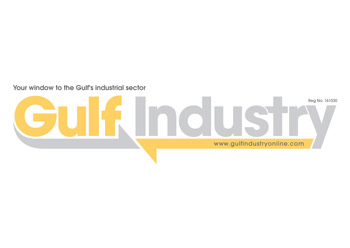
 The Hempel plant in Dammam, Saudi Arabia’s Eastern Province
The Hempel plant in Dammam, Saudi Arabia’s Eastern Province
New product launches and strategic expansions to production facilities in the Gulf region are on the cards for Hempel Paints in 2011 as the company seeks to increase its market share for decorative, marine and protective paints and coatings.
The global brand is planning to expand its facilities in Saudi Arabia to meet anticipated demand from projects across the region, says Karsten Pedersen, group vice president, Hempel Paints Middle East (West). For that purpose a piece of land has been bought in Jeddah, where a new state-of-the-art factory will be ready by late-2012.
“We are planning to add 20-30 million litres per year to our capacity, mainly coming from the new Saudi factory, but also by expanding capacity in existing factories in Kuwait, Qatar, the Emirates and Bahrain,” he explains.
These expansions are part of Hempel’s strategy in 2011 to increase its regional market share, particularly in the decorative paints segment, says Ahmed Abdel Aziz Ismail, regional sales director, decorative paints, Hempel Middle East West.
“Hempel’s decorative paints market share is smaller than we believe it should be, so in 2011 we will intensify our efforts in this key segment, which we believe offers great growth potential,” he says, pointing out that this strategy would not be at the expense of Hempel’s other market leading marine paints and protective coatings.
 |
Interior of the factory |
“The Middle East decorative paint market is expected to grow organically by between five and seven per cent this year on average. However, Hempel is aiming to grow its decorative paints business by 15 per cent this year as we sharpen our competitive edge,” he adds.
“We offer customers a complete solution. As a global company, we deliver competitively-priced products of the highest quality, supported by the best after sales and technical teams of any company in the region,” he continues.
A key part of Hempel’s strategy to boost market share will be to launch new products in 2011, and this will include three new decorative paint products, says Ismail.
Among these are new additions to Hempel’s Fusion and Context ranges. The company is also working towards new ‘green’ certification for its innovative Thermo range of environmentally-friendly products which help reduce energy loss, a product type which is increasingly specified by designers on major projects in the Gulf.
 |
Testing in the Hempel lab |
“The introduction of new products is a key KPIs (key performance indicator) for Hempel Paints,” Ismail explains. To meet local client requirements, product development is largely conducted in the region, predominantly at Hempel’s regional research & development (R&D) laboratory which opened in 2009 in Bahrain but also at the smaller R&D centres at each of the companyís six regional manufacturing sites in Bahrain, Saudi Arabia, Kuwait, Qatar, Sharjah and Syria.
Ismail says when developing new products Hempel leverages input from various sources.
A diverse ideas pool
“We draw upon a diverse ideas pool, most importantly from our customers and our sales executives,” he says. It can, he adds, take anywhere between three and nine months from initial product conception to launch, during which time all parties evaluate the advantages and economic benefits of the product.
Currently, decorative paints account for up to 60 per cent of Hempel’s total regional mix in terms of production volume. The higher value marine and protective coatings make up the remaining 40 per cent.
For the industrial and construction applications, Hempel’s decorative, as well as marine and protective coatings, are defined by international quality standards, easy maintenance and high performance, in particular with anti-corrosion and anti-carbonation features.
Hempel’s regional customers are served by one of two Hempel companies.
Hempel Middle East (West), which operates production facilities in Saudi Arabia (decorative, marine and protective paints and coatings), Kuwait, Bahrain and Syria, serves local markets as well as exporting to customers in Iraq, Lebanon, Jordan and Sudan.
Hempel Middle East (East), meanwhile, operates manufacturing sites in Qatar and Sharjah, serving not only local markets but also customers in Yemen, Oman and Iran.
Shared capabilities
Despite having a broad operational footprint in the region which enables this dynamic company to react rapidly to local customer requirements, Hempel also benefits from shared capabilities and services among Hempel operations in the region (for example centralised purchasing and technical services functions). This, says Ismail, enables the company to achieve significant economies of scale, some of the benefits of which it can pass on to customers.
In the medium term, boosting the decorative paints business will be a key focus for Hempel, and Pedersen says a five-year business plan is being implemented in this regard.
“Additional funds are being allocated to further develop our distribution network, and we have also invested in highly specialised R&D facilities in Bahrain to improve our ability to develop new coatings specially designed for the demands.”
Established in 1915, Hempel Paints set up its first Middle East marine and decorative paint manufacturing facility in Kuwait in 1966.
Saudi Arabia is Hempel’s largest regional market, and it has supplied decorative paints to prestigious projects including Princess Noora University, King Abdullah University, new hospitals and schools, military housing projects, private sector projects and hotels. Hempel has also secured to contract to supply paint to a new monorail project in Mecca.
To meet future demand for its products and services, Hempel will also build up its HR capabilities in the region, and trainers from the Hempel Academy in Europe will visit the region up to three times this year to conduct courses.











